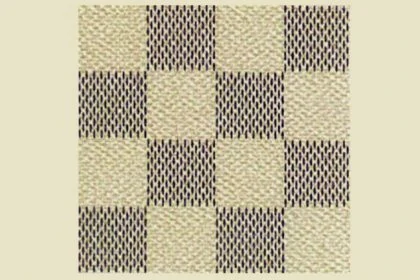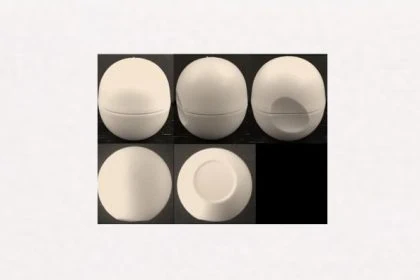Louis Vuitton won the trademark dispute about its famous chequerboard pattern before the European Court. Although the chequerboard pattern is devoid of distinctive character, distinctiveness has been demonstrated through use, in particular through the presence of the mark on the internet.

At the centre of the interesting trademark dispute was a three-dimensional EU trademark of Louis Vuitton Malletier (France) in the form of a checkerboard pattern in beige-black (registered since 2008), against whose trademark registration Norbert Wisniewski (Poland) filed an application for invalidity on the grounds of lack of distinctiveness. A 3D mark is distinctive only if it departs significantly from the norm or customs of the sector of the goods and services in question.
It follows that, in several judgments in recent years, chequered and plaid designs have been excluded from trademark protection on the ground of lack of distinctive character because they are simple, basic and commonplace designs, in particular in relation to goods in Class 18 of Nice, such as textiles and bags (representation of a grey chequered design (judgment T-360/12), representation of a brown and beige chequered design (T-359/12) and representation of a beige and black chequered design – also by Louis Vuitton (T: 2015:215) ).
In its contested decision, the Board of Appeal also refused trade mark protection for the contested beige and black Vuitton chequered pattern. The contested mark is an everyday pattern, the Board of Appeal stated in its reasoning and simply assumed that this was a known fact.
Everyday pattern: rightly assumed to be a known fact
The applicant Louis Vuitton contested this before the European Court (CJEU). In invalidity proceedings, the validity of the registered EU trade mark is presumed in principle, it is up to the party who has filed the application for a declaration of invalidity to assert before EUIPO the specific facts which call into question the validity of that trademark. However, the applicant Wisniewski did not adduce any significant evidence, but relied on alleged facts which were well known.
The Court confirmed this only in part. Although there is a presumption of validity for registered EU trade marks, the Board of Appeal was right to find that the chequerboard pattern is a design which has always existed and is used in the decorative arts with an undeniable link to goods in Class 18. If EUIPO decide to take into account known facts, they are not obliged to prove the accuracy of those facts in their decisions, the CJEU added. The design does not contain any significant deviation from the traditional representation of chessboards and corresponds to the traditional form of such a design. Consumers would in reality perceive only an everyday and commonplace pattern. Therefore, it was rightly assumed by the Board of Appeal to be a well-known fact, the CJEU held.
All the more important for the applicant Louis Vuitton Malletier was the second plea in law complaining of the Board of Appeal’s assessment of distinctiveness through use.
Distinctiveness through use: proof required for the entire EU
An EU trademark is subject to the obligation to furnish proof of acquired distinctiveness through use for the entire EU. Such proof can be provided for all EU Member States concerned or separately for different Member States or groups of Member States, the CJEU stated. According to case law, it would be unreasonable to require proof of such acquisition for each individual Member State. In particular, where, for certain goods or services, several Member States are grouped together in the same distribution network, they could be considered as one group. The CJEU added that a cross-border market could also be presumed to exist where there is geographical, cultural or linguistic proximity between two Member States.
Furthermore, according to the case-law, although it must be demonstrated that the disputed mark has acquired distinctive character throughout the European Union, it is not necessary to provide the same types of evidence for each Member State.
As regards the assessment of distinctive character through use, the Court made an overall assessment of the evidence, adding that the factors to be taken into account included, the market share held by the mark, the geographical distribution and duration of the use of the mark, the amount invested by the undertaking in promoting the mark and the recognition of the relevant public as originating from the undertaking.
Overall assessment of all evidence
The Board of Appeal had divided the EU Member States into three groups, and Group 3 included all EU Member States in which Vuitton did not have any retail outlets. And since the evidence for Group 3 of the EU Member States was based on an extrapolation from Vuitton, the Board of Appeal had primarily examined the evidence submitted for those Member States. According to the Board of Appeal, that evidence did not allow conclusions to be drawn as to the perception of the disputed mark by the relevant public in those Member States.
The applicant Vuitton claimed, in particular, that the Board of Appeal had not taken into account important evidence.
Exhibits showing Vuitton as a player in the leather industry, which is one of the most famous luxury goods companies in the world, were not taken into account. Between the relevant years 2008 and 2014, Vuitton was thus the best-selling supplier of bags and travel bags in Western Europe. Similarly, extracts from the applicant’s catalogues, brochures and advertisements were not taken into account, nor, in particular, was the presence of the contested mark on the internet.
Vuitton stated that the positioning of the mark in the luxury segment and a focus of shops on central and most touristy areas of large cities and airports was in line with its brand strategy. Through websites and social media, the brand is nevertheless widely accessible and known throughout the European Union. Goods bearing the mark at issue were displayed both on Instagram and on a corresponding Google search on the internet, including, for example, in Slovenia, one of the EU Member States in Group 3.
In addition, Vuitton also claimed counterfeiting and product piracy with the contested mark in a number of EU Member States, including Group 3 EU Member States, but the Board of Appeal did not want to accept this, as the evidence not only showed the contested mark but also a complete imitation of the goods.
CJEU upholds Louis Vuitton’s claims
The CJEU saw it differently. Evidence would have to be examined both in relation to the disputed mark alone and in conjunction with another mark of the applicant. The seizure of counterfeit goods bearing the disputed mark was therefore substantial evidence. Popular websites such as Google and Instagram are also relevant to the use of the disputed mark on the internet, the CJEU explained.
It follows from all the foregoing that, by failing to carry out an overall assessment of the relevant evidence submitted by the applicant, the Board of Appeal infringed Article 59(2) of Regulation No 2017/1001. The CJEU therefore upheld Vuitton’s second plea and annulled the contested decision of the Board of Appeal.
Would you also like to protect your trademark or brand?
Our lawyers are experienced in trademark and patent law, national and international law.

Sources for text and image:







Leave a Reply